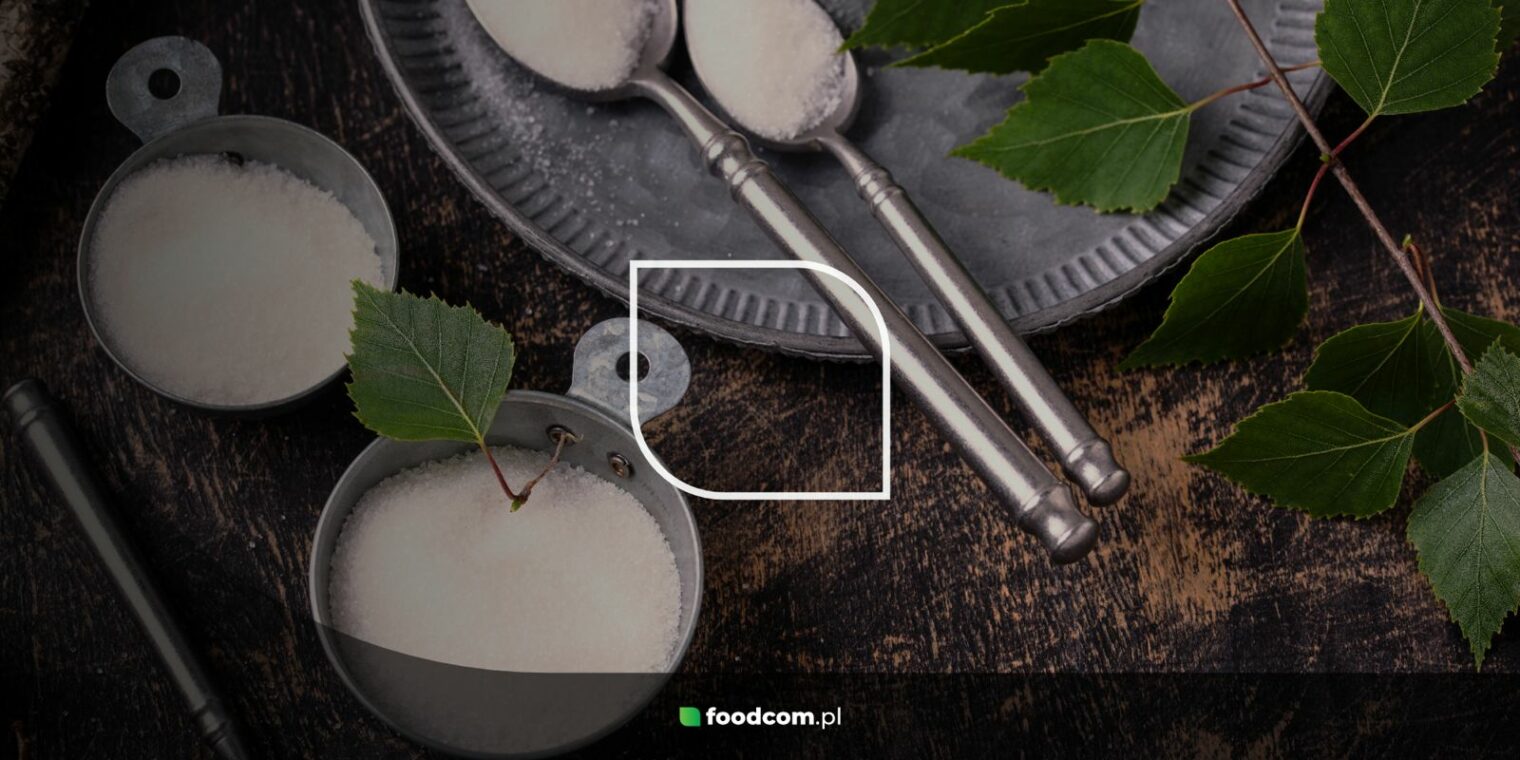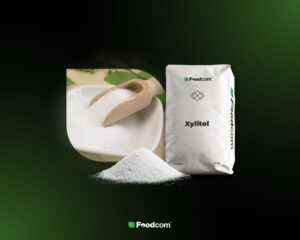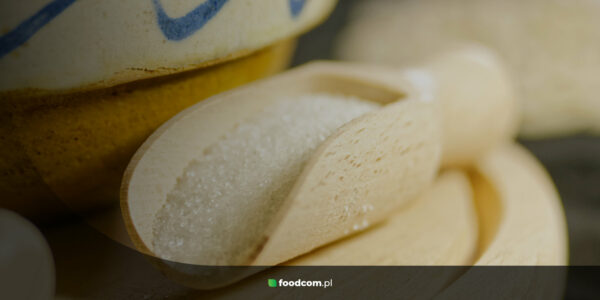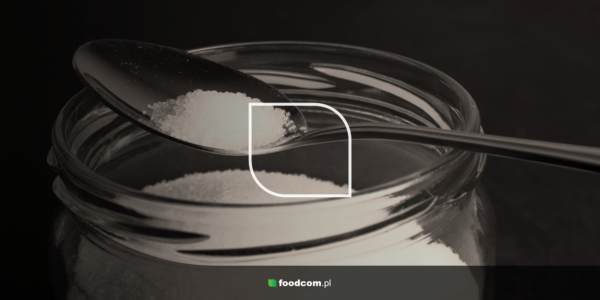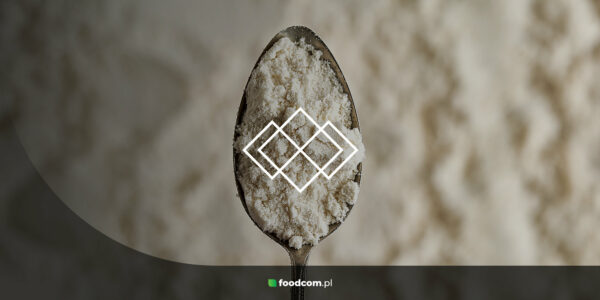- Xylitol is otherwise known as birch sugar.
- It is a good alternative to traditional sugar, having significantly fewer calories and a much lower glycemic index.
- Xylitol is extracted from birch bark, corn cobs or biomass residues from the wood and agricultural industries.
- Xylitol has a health-promoting effect on the body, but in large quantities it can cause unpleasant effects.
- Alternatives to xylitol are sweeteners such as erythritol or sucralose.
Xylitol, otherwise known as birch sugar, is known as an excellent alternative to regular sugar. It is also popular as an ingredient in candies, chewing gums and diet products. What are the characteristics of this sweetener, how it is obtained and what to look for when buying it?
What is xylitol?
What is xylitol? It is an organic chemical compound otherwise known as birch sugar. It belongs to the group of five-carbon polyhydroxy alcohols – sugar alcohols (sugars). It is a reduced derivative of xylose – a carbohydrate called wood sugar. The chemical formula of xylitol is: C5H12O5. Its name comes from the Greek word xýlon, meaning wood.
Xylitol looks similar to sugar – it is in the form of white or colorless crystals, but due to its different structure it can be perceived as sweeter, and it also causes a cool sensation in the mouth. It contains 40% fewer calories and has a much lower glycemic index – only 8 compared to a GI of 100 for sucrose. This makes xylitol an excellent sugar substitute for diabetics and people with insulin resistance, as it does not cause a sharp rise in blood glucose and insulin levels.
Where is xylitol obtained from?
What is xylitol made from? Birch sugar, as its name implies, can be extracted from the bark of birch trees. It also occurs naturally in some vegetables and fruits: yellow plums, strawberries, raspberries, cauliflower, pumpkin, spinach or lettuce. It is also produced in small amounts by the human body in digestive processes. Nowadays, xylitol is extracted not only from birch bark, but even more commonly – from corn cobs or wood waste.
How is xylitol produced? For this process, it is necessary to obtain biomass, i.e. wood or agricultural waste from the processing of corn, wheat or rice. The biomass is then either fermented using bacteria, fungi or yeast (such as Candida tropicalis or Candida guilliermondii), or processed by acid hydrolysis and chromatography. The biomass is then treated with acid to obtain xylose. Purified by chromatography, xylose is then hydrogenated to xylitol using a Raney nickel catalyst.
Xylitol – applications
Xylitol is an excellent alternative to regular sugar. Its advantages include not only lower calories, higher sweetening capacity and lower glycemic index. Xylitol is also characterized by a lack of caries-forming effect due to the fact that it is not broken down in the upper digestive tract.
Xylitol as a food additive
Xylitol is used as a food additive in many countries, including the US and Europe, where it is labeled E967. It is found wherever it can replace sugar, especially in candies, chewing gums or diet products (jams, jellies, ice cream, dairy products).
Xylitol can also be used in households, when making desserts or baked goods. It is stable enough to be suitable for baking, during which it retains its properties, but no caramelization occurs as with sugar. In jellies or jams, xylitol can reduce the effectiveness of gelling agents. Another function of xylitol as a food additive is to lower its freezing point.
Dental and oral health
Consumption of xylitol can help eliminate plaque and help treat oral fungal infections. Xylitol inhibits the growth of pathogenic Streptococcus bacteria, and may also reduce the risk of tooth decay. For this reason, the compound is a common ingredient in products such as:
- toothpastes and other oral hygiene products,
- candies and chewing gums,
- medicines and dietary supplements.
Other uses of xylitol
Xylitol may have applications beyond the food industry. For example, it is said to be used as an ingredient in cooling fabrics. When moisture or sweat comes into contact with xylitol, it produces a cooling sensation. Xylitol also has anti-corrosive properties.
What to look for when buying xylitol?
When buying and using xylitol, there are several important points to consider:
- choose pure xylitol from reliable sources, such as the Foodcom store, where you can buy xylitol 25 kg;
- xylitol is perceived as sweeter than regular sugar, so be careful with the amount;
- xylitol does not ferment in the gastrointestinal tract, it is only broken down in the large intestine – in sensitive people this can lead to intestinal problems such as bloating or diarrhea, especially if xylitol is consumed in large amounts (more than 50 g per day), when it has a laxative effect;
- there is no set upper limit for xylitol intake, but it is not recommended to consume more than 10 teaspoons a day;
- despite its lower caloric content than sugar, xylitol also leads to a mental addiction to the sweet taste, so its consumption should be limited;
- significantly increased consumption of xylitol can also cause kidney stones;
- xylitol will not be suitable for diabetics in a hypoglycemic state, as it does not raise blood glucose levels;
- remember that xylitol is unsafe for consumption by dogs.
Xylitol vs. other sweeteners
Despite potential negative effects on the digestive system, xylitol is still better tolerated by the body than mannitol or sorbitol, and is sweeter than them. In addition to those mentioned, popular natural sweeteners include erythritol, fructose or stevia. Artificial sweeteners, on the other hand, include sucralose, glucose-fructose syrup or aspartame.
Erythritol
Erythritol is a substance found under the name E968. Erythritol is less sweet than sugar and xylitol, but it does not contain any calories, so it does not cause even a small increase in blood sugar and insulin levels, nor does it have a negative effect on dental health. Erythritol can be found in chocolate, candies, yogurts or jellies. In addition to sweetness, it also adds volume to foods, improves their texture, thickens their texture, masks bitterness and reduces moisture absorption.
Erythritol is also used as an ingredient in medicines for its antioxidant properties, ability to retain moisture and stabilize the product, and sweet taste.
Sucralose
Sucralose goes by the name E955. It is produced from sucrose by chlorinating it. It is about 600 times sweeter than sugar, but contains no calories. Sucralose is widely used in the food industry, appearing in a variety of products, especially dietary products and beverages. It remains stable at low and high temperatures and is highly soluble in water. Sucralose is also a common ingredient in cosmetics (e.g., lipsticks), toothpaste, mouthwash, and medicines and dietary supplements.
Stevia
Stevia is extracted from the Sevia rebaudiana plant and comes in the form of a white powder several hundred times sweeter than sugar. When choosing this sweetener, one should be careful about its purity – it is often found in the form of a mixture of different substances, which increases its caloric and blood glucose-raising potential. Stevia is characterized by its rich nutritional value, such as its content of folic acid, fiber and various micronutrients (vitamins B and C, minerals). The disadvantage of stevia may be its characteristic aftertaste.
Xylitol market
In an era of renewable energy sources and great emphasis on ecology, the possibility of producing xylitol by fermentation from spent biomass is strongly appreciated. According to forecasts, this industry in the US will be worth $1.4 billion by 2025. The popularity of xylitol continues to grow, with production in recent years reaching nearly 200,000 tons per year.

